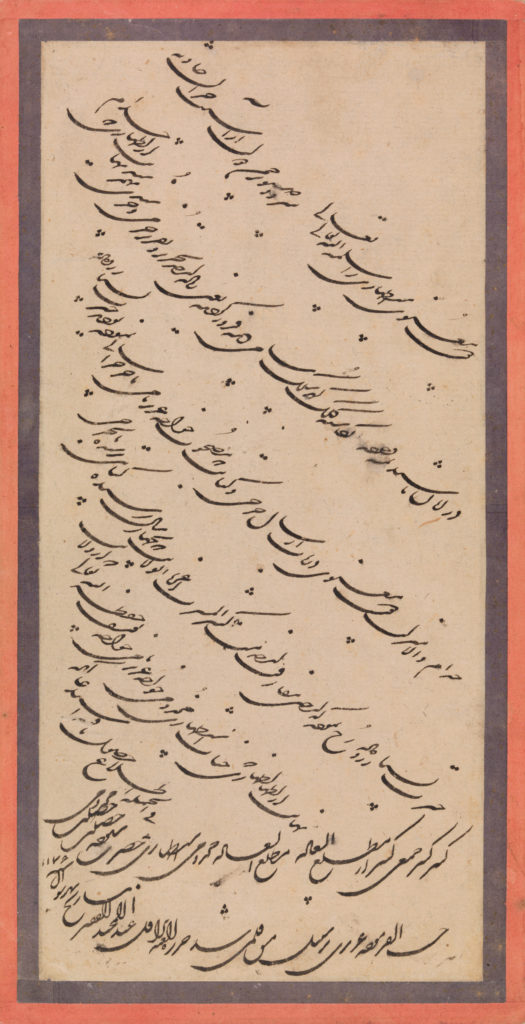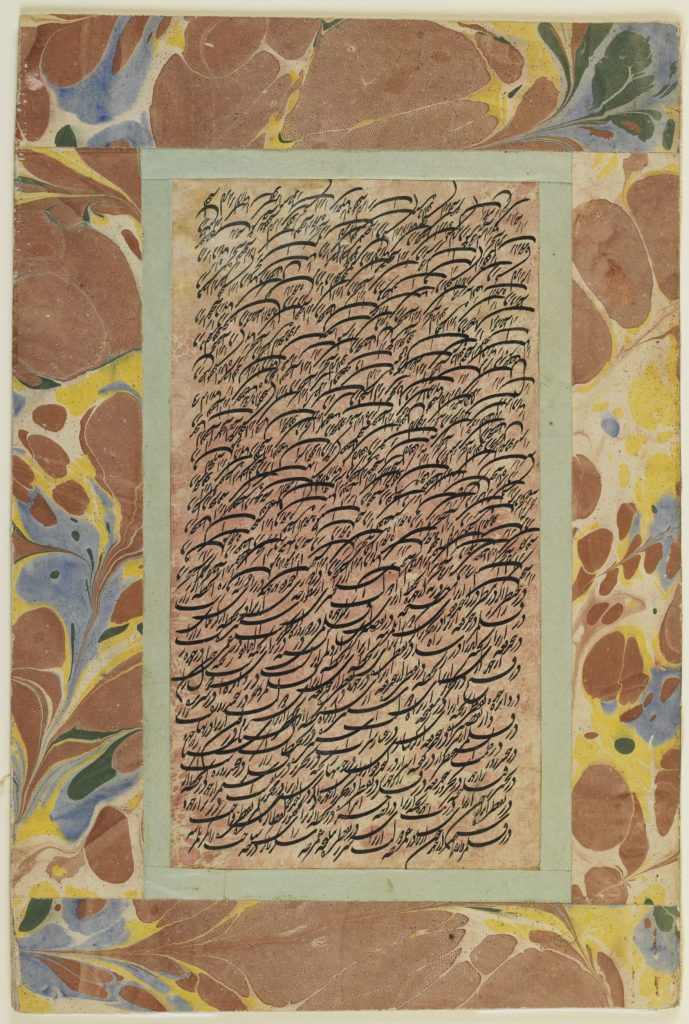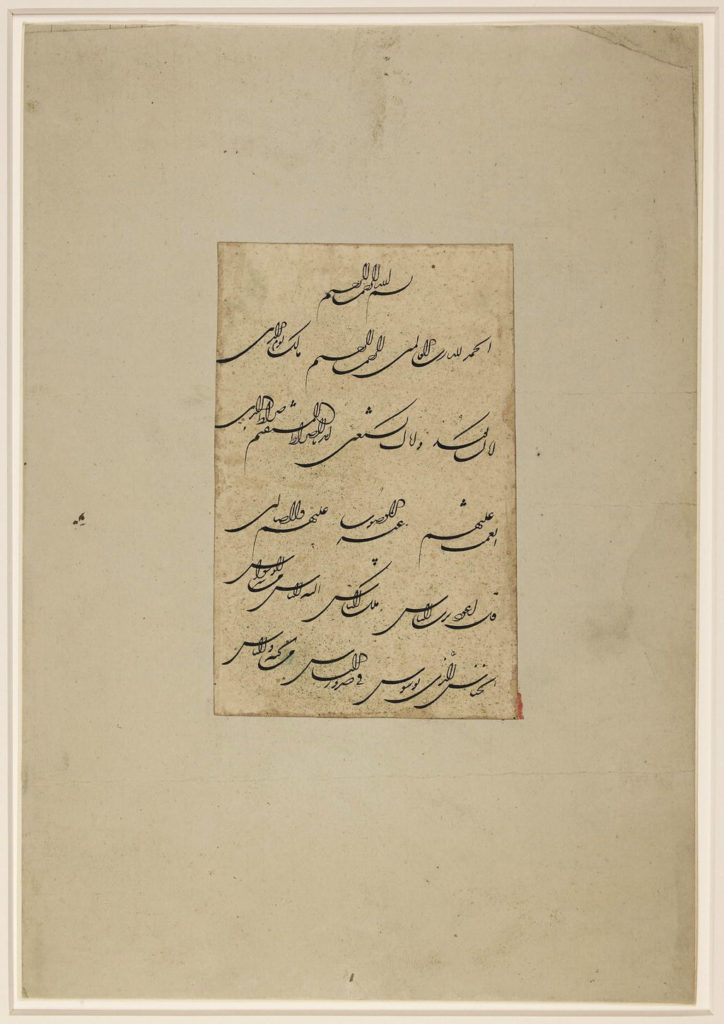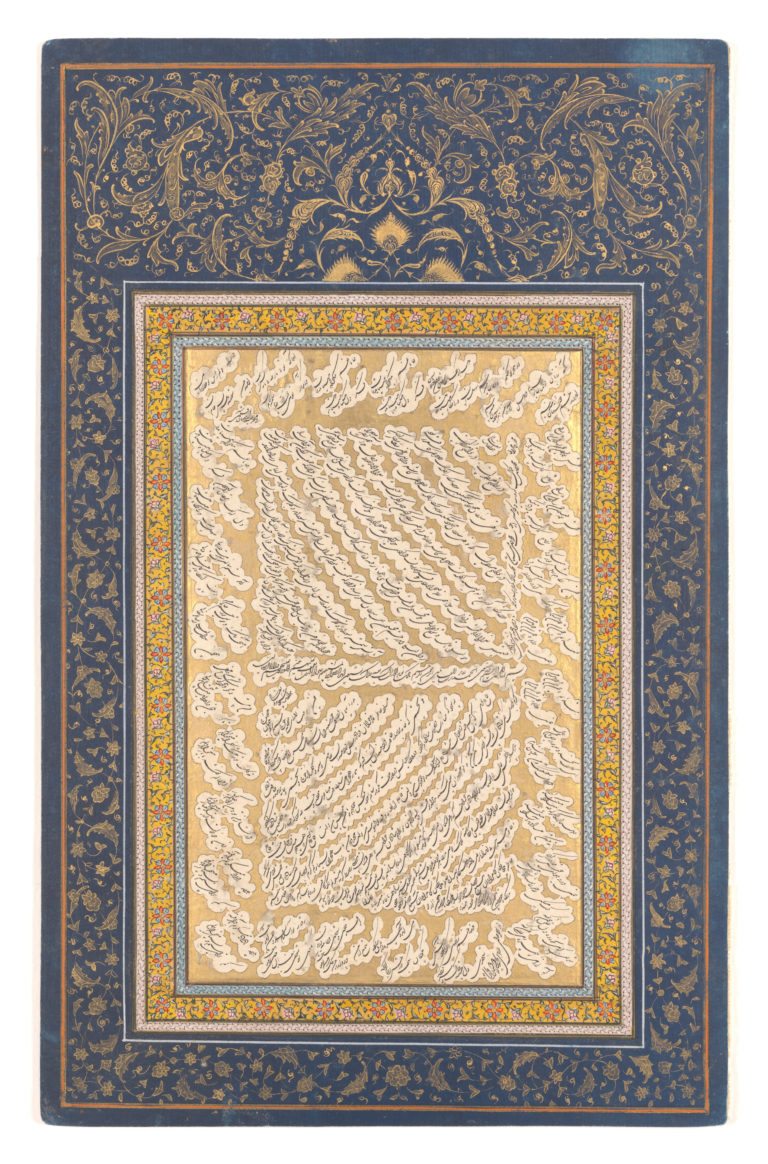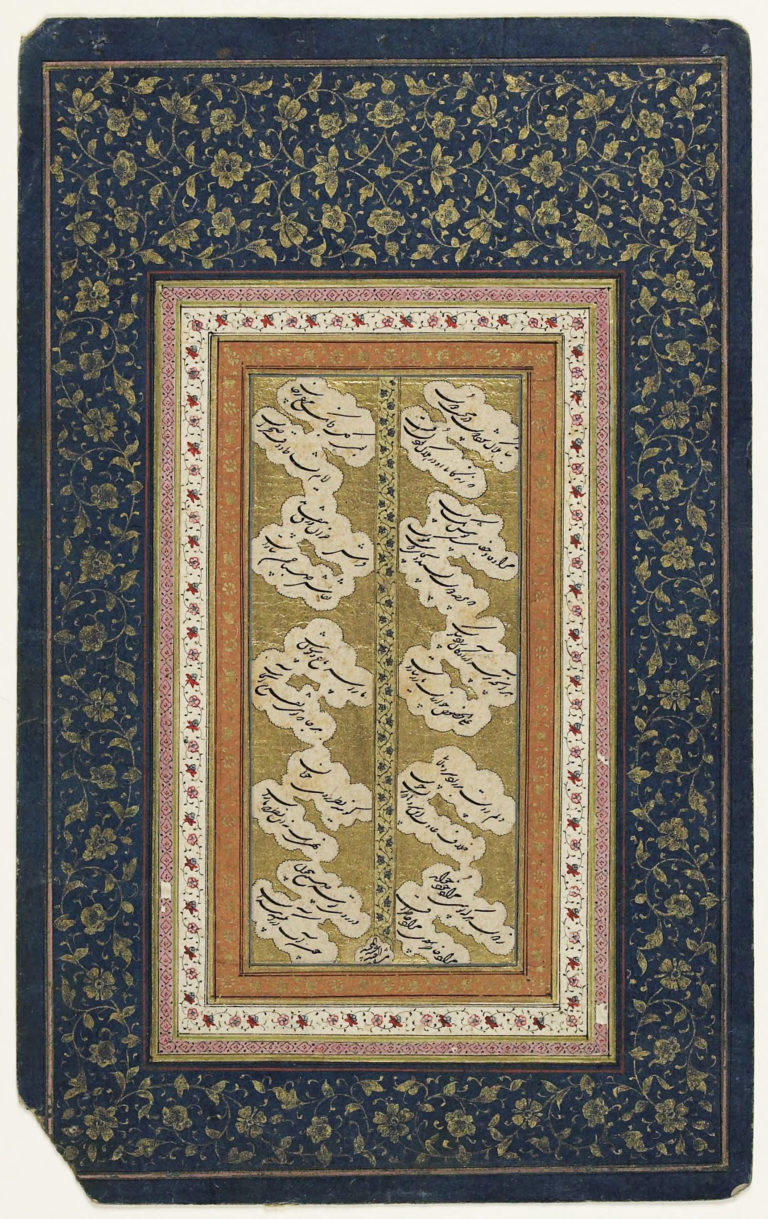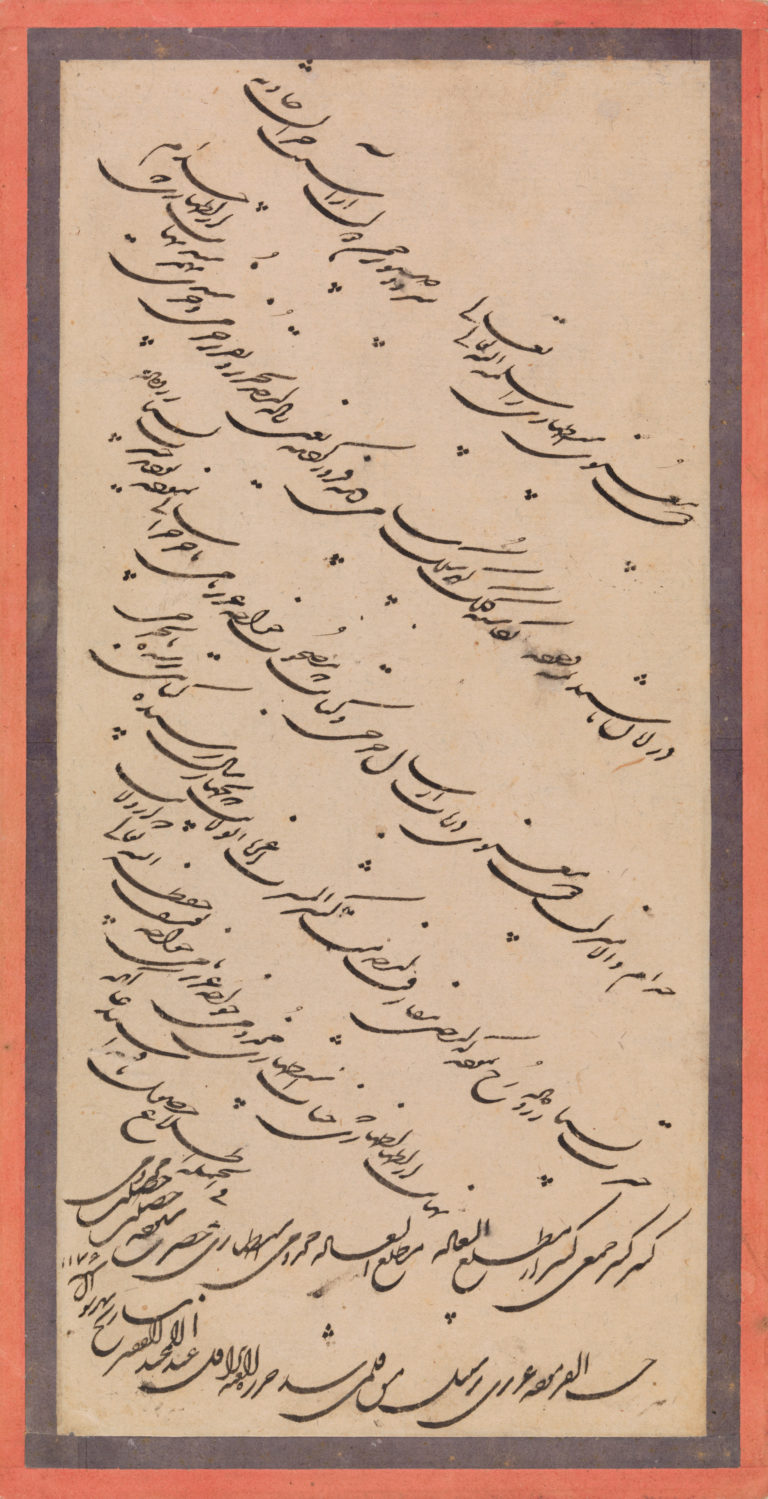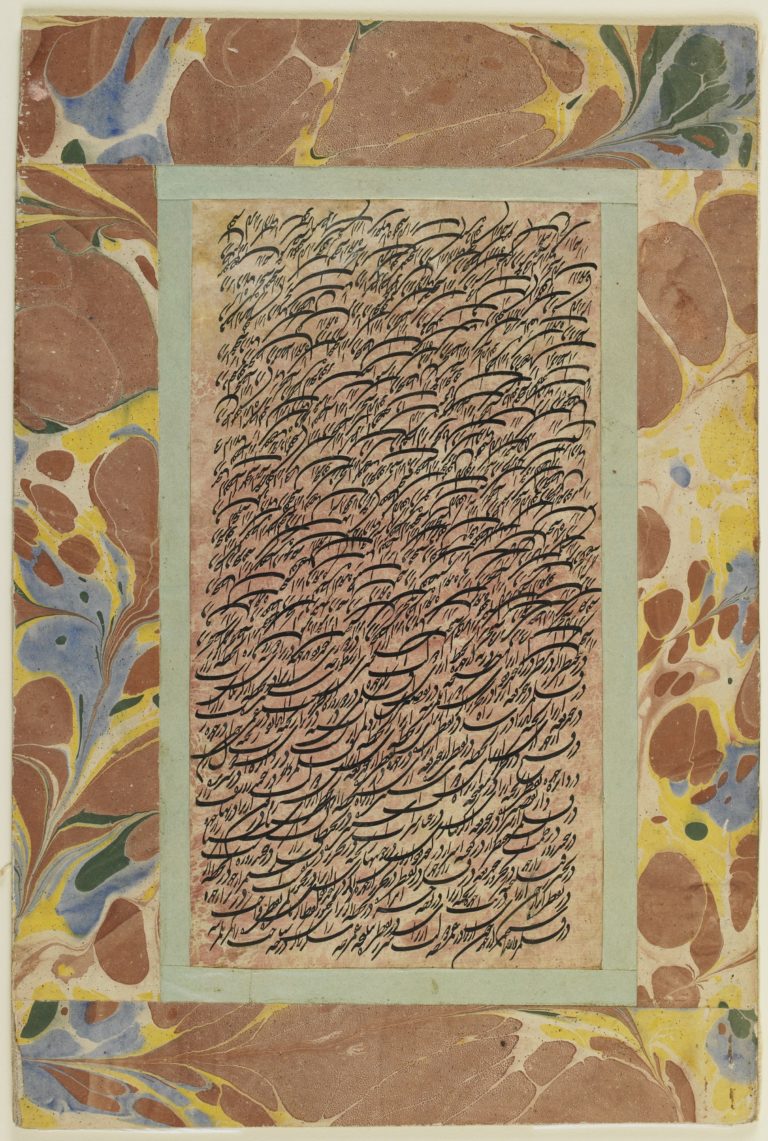Shikaste
(Pronounced “shi-kas-teh”; Persian–Shekasteh)
Meaning
- “Shikaste” means “broken,” because this script is a “broken” version of the nasta‘liq (or ta‘liq) script
Uses
- Used for longer documents because it was easy to write quickly
- Used for poetry because of its flowery visual style
- Used for official proclamations
Timeline
- Developed in 14th century
- Used widely in 19th century Iran during the Qajar dynasty
- Still in use today
Distinctive characteristics
- Shikaste is the ta‘liq or nasta‘liq script written rapidly. Each word is written with a single pen stroke, without lifting the pen off the page
- Letters and words that don’t connect on the left are often connected in this script (unauthorized ligatures)
- Vertical strokes are extremely short
- Letters are written diagonally across the page
- Letter shapes are intricate, complex and dense
Notes
- This script is illegible to the inexperienced eye.
